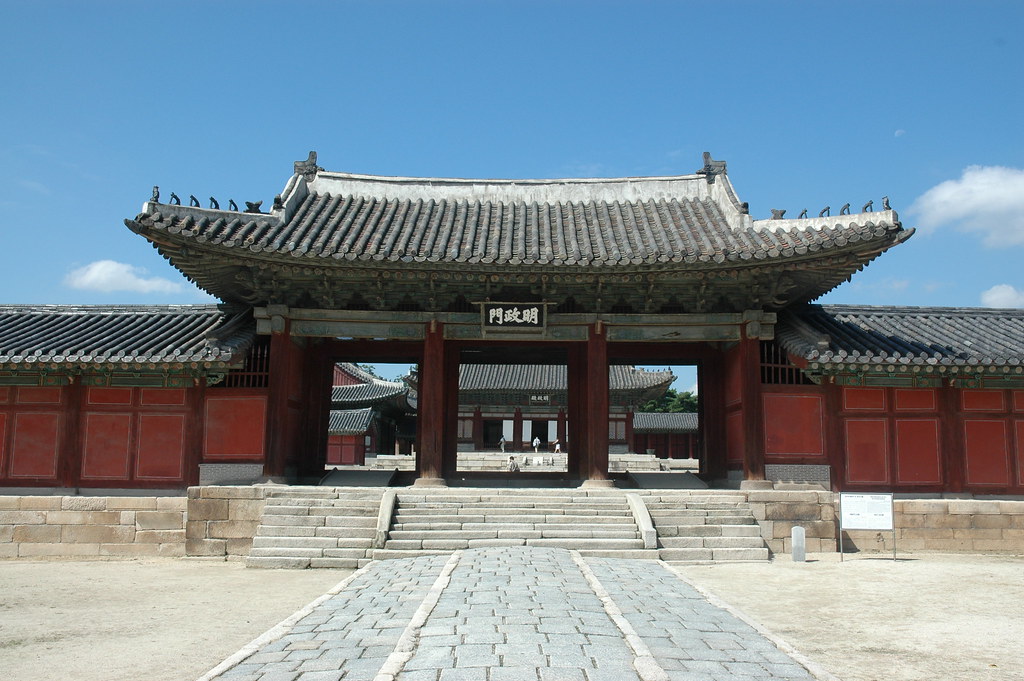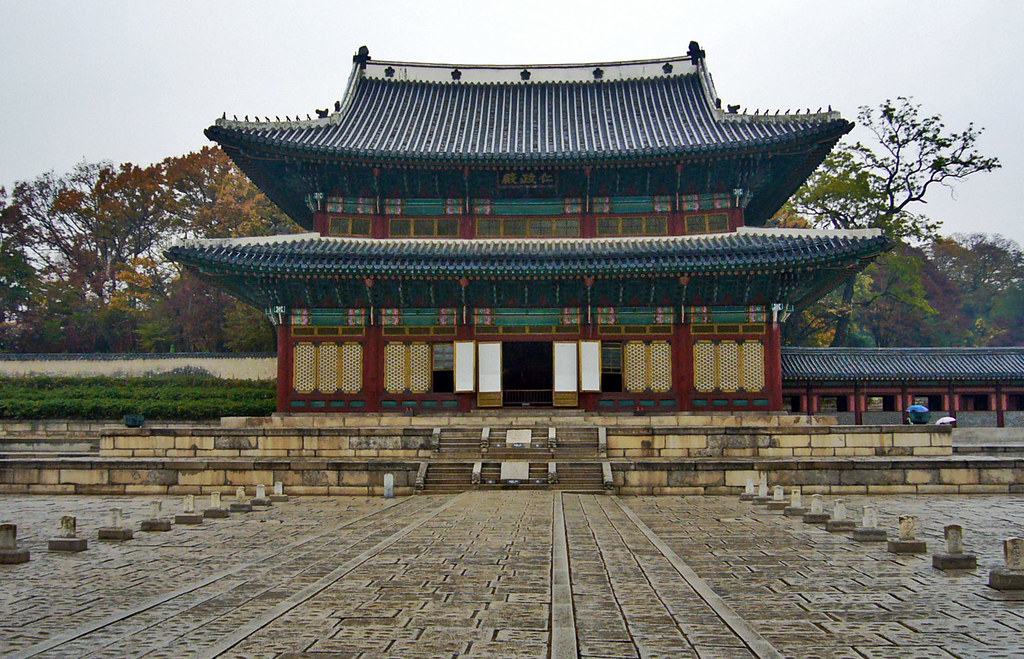The Palaces of the Joseon Dynasty: Seoul, South Korea
| Gyeongbokgung Palace |
The capital of the nation for centuries, today’s Seoul is one of the densest places in the world, with more than 24 million people crammed in a sprawling metropolis of high-rises and neon-lit streets. But Seoul is also home to some of the country’s most historic and beautiful buildings, including the elaborate Five Grand Palaces, sitting behind imposing walls and gates in the heart of bustling downtown. The palaces are a testament to Korea’s feudal past, all built during the Joseon Dynasty (the last royal and imperial dynasty), which reigned for almost 500 years, from the 14th to the 19th centuries.
 |
| Jongmyo Royal Shrine |
Two of the five are exceptional:the Gyeongbokgung Palace (Palace of Shining Happiness) and the nearby Chandeokgung Palace (Palace of Prospering Virtue), both in the Jongno-gu district. The Gyeongbokgung is the city’s oldest and largest palace—first constructed in 1392 and the country’s main seat of power through the centuries—and its scale is staggering. With fairy-tale views and a backdrop of the Bukansan mountain range, the palace was the traditional home to kings for 200 years until the Japanese invasion of 1592. Five hundred buildings stood on its property when it was first built, making it a city unto itself. Visit the beautiful lotus pond, then exit through the back gate and stroll past Blue House, South Korea’s presidential residence.
 |
| Changdeokgung Palace |
The Jongmyo Royal Shrine, perched on the eastern edge of the Gyeongbokgung Palace grounds and surrounded by dense woodland, is believed to hold the spirits of deceased kings and queens of the Joseon Dynasty. Built in 1385, it’s also the country’s oldest preserved royal Confucian shrine, and each May it is the site of a ceremony in honor of deceased monarchs.
More than 13 of Korea’s kings have lingered in the beautiful wooded Secret Garden of the Changdeokgung Palace. Despite its central location in busy Seoul, wandering its pathways and crossing the elegant stone bridges spanning ponds (the Arch of Longevity was carved from a single piece of stone) feels like a walk in the countryside. It was constructed in 1405 and rebuilt in the 17th century, and today, in the summer months, the palace provides a glorious backdrop for music, dance, and opera.
Visitor info: www.visitseoul.net.
Gyeongbokgung Palace: www.royalpalace.go.kr.
Jongmyo Royal Shrine: www.jongmyo.net.
Changdeokgung Palace: http://eng.cdg.go.kr/. Where to stay: A long-time
favorite, the elegant Shilla Seoul is set in a 23-acre private park. Tel 88/2-2233-3131;www.shilla.net. Cost: from $350. Best times:late Mar–May for spring weather, late Aug–Oct for pleasant and cool weather.

0 comments:
Post a Comment